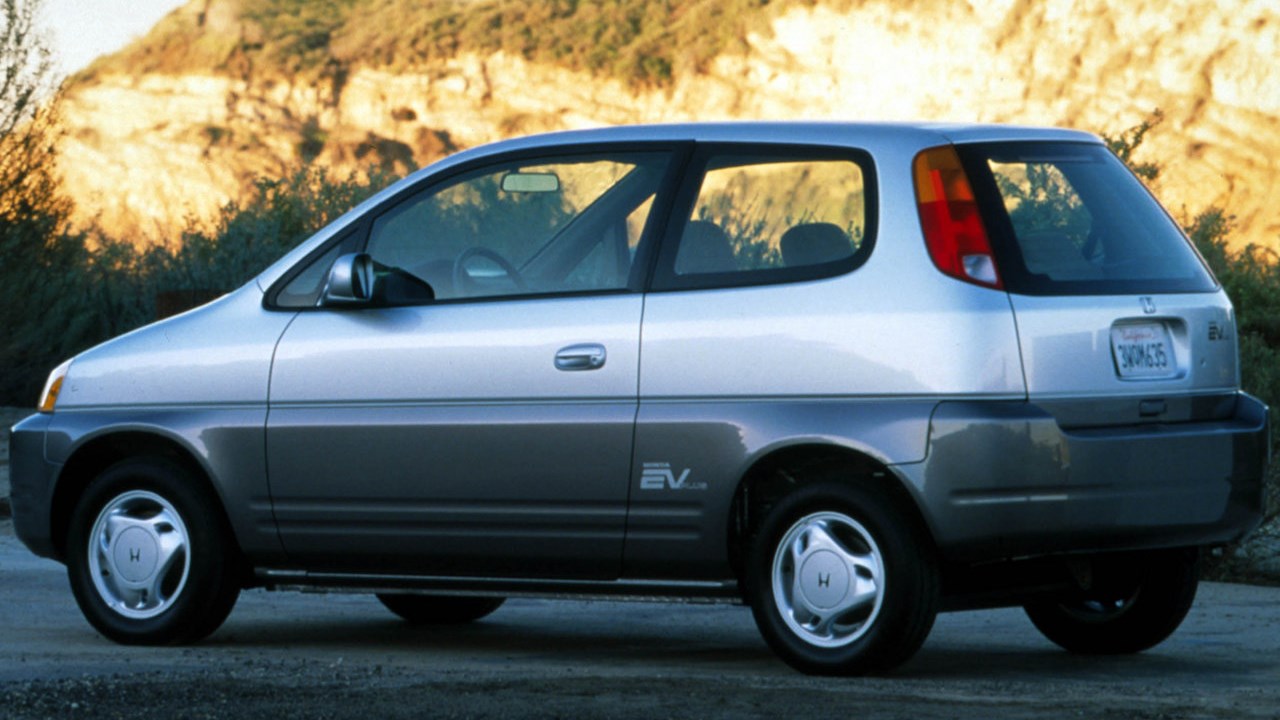13 Electric Cars That May Break Down After 50,000 Miles

Electric cars are still some of the most polarizing on the market, with many bemoaning the demise of internal combustion engines. But like them or not, EVs are here to stay, and there is no denying that our options are slowly improving.
Despite how good some EVs have become, they need to catch up regarding efficiency, reliability, value for money, and much more. In fact, you might be lucky to extract 50,000 miles out of some EVs out there.
With this list, we have compiled 13 of the worst EVs you shouldn’t spend your money on, both new and second-hand. Reliability plays a significant role in their making the list, but we have also considered other factors such as their value for money, how they look, and how comfortable they are to drivers. We think there might be one or two surprises for you on this list.
Mazda MX-30

There was a lot to like about the Mazda MX-30. The compact electric SUV was incredibly stylish inside and out, and eco-friendly materials boosted its appeal further. Yet Mazda made the strange decision to only sell the EUV in California, severely limiting the vehicle’s appeal in the United States.
While sales in California could have seen it introduced nationwide, the MX-30 was almost doomed from the beginning thanks to its short 100-mile EPA-estimated range. This range was unlikely to ease any form of range anxiety and made the MX-30 seriously impractical as a daily driver. The sales make for a grim reading, with 181 sold in 2021 and 324 sold in 2022, while Mazda sold just 100 in 2023.
Nissan Leaf

There was a time when buying the Nissan Leaf made perfect sense. It’s still a highly affordable EV, with the 2024 model costing $28,140 MSRP, and you get up to 212 miles of range, a stylish-looking EV and one with excellent practicality.
However, since the Leaf’s introduction, the world of EVs has massively moved on. There are many more options with more features on the market now, with the Chevrolet Bolt being one of them. If you want to spend a little more, you can pick up either the Hyundai Ioniq 5 or Ioniq 6. In short, buying a Leaf isn’t as easy a decision as it once was.
Mitsubishi i-MiEV

Several automotive manufacturers have tried to produce small and compact EVs that offer excellent city driving and are easy to park. However, only some of them make a lasting impression, with the Mitsubishi I-MiEV being one of those that failed to do so.
The Japanese manufacturer sold the I-MiEV from 2011 to 2017. While its small size made it ideal for city and town driving, the EV’s range was extremely limited, with the U.S. model offering just 62 miles before the battery ran flat. The I-MiEV had a 100-mile range in its native Japan, and as a Kei car, it was much better suited to its home market than the United States.
Volkswagen e-Golf

It was only a matter of time before Volkswagen produced an electric version of the Golf, and that arrived with the e-Golf, bringing the hatchback firmly into the electric era. It has some great plus points, sporting the same outstanding build quality as the regular Golf, and it is spacious, practical, and super quiet.
But, it is not without its issues. First, Volkswagen stopped offering the e-Golf in the United States in 2021, removing one electric option from the market. Then, there is its very limited 120 miles of range, while its key rival, the Hyundai Kona, can offer as much as 319 miles of range for a very low MSRP of just $32,675. For comparison, the e-Golf had a slightly higher MSRP of $32,790.
Renault Fluence ZE

While it might have quite a poor name, the Renault Fluence ZE was a big step for the French manufacturer. An electric version of the Fluence sedan, Renault took the covers off the ZE at the 2009 Frankfurt Motor Show, and it had an all-electric range of 115 miles and a top speed of up to 84 mph.
However, there was a bit of a problem. Renault decided that the best thing to do was lease the battery in the EVs, allowing them to defray (provide money) the cost of its electric cars upfront. This still happens today, but it became a problem for Fluence when the company providing the batteries went out of business. Suddenly, leasing a battery doesn’t sound like such a good idea.
Ford Focus Electric

Ford has really improved its EV game over the last few years. The Blue Oval now produces cars such as the Mustang Mach-E, the F-150 Lightning, and an electric Transit van. Prior to this, Ford also produced the Ford Focus EV, which sold in the United States from 2011 to 2018.
However, the Focus Electric was not a sales success for the manufacturer. In Europe, sales were particularly bad for the hatchbacks, with just 61 sold across all of 2016. Ford sold none in the United Kingdom throughout its production run. In fact, of the 24 registered in the U.K., all of them belonged to Ford. It is no wonder Ford wants to forget the Focus Electric.
Porsche Taycan

On the face of it, the Porsche Taycan is one of the best EVs currently on the market. It’s luxurious and stylish, offers great comfort, and is very practical. Plus, it’s a Porsche! Still, the Taycan suffers quite badly in some reliability studies, particularly What Car? in 2023, where it ranked last of 20 EVs in its class.
While the main trouble spots were the air conditioning and infotainment system and no major issues with the electric powertrain, these are still a big deal. No air conditioning would make the ride very uncomfortable, and the failure of the infotainment system could be a disaster.
GM EV1

On paper, things look good for the GM EV1. It is an electric car that looks great and was the perfect response to Californian regulators’ call to increase the production and sale of zero-emissions vehicles. EV1s could have as much as 140 miles of range, which was excellent for an early-production EV, and it had around 137-hp.
Sadly, GM lost money on every single EV1 it made and didn’t see a single profit on any of them. The legislation for zero-emissions vehicles in California fell into disarray and potentially set back the development of EVs by some years. The EV1 could have been a great success story, but in the end, it was an awful failure.
Honda EV Plus

The Honda EV Plus was another electric car that looked great on paper. It was Honda’s first EV, introduced in 1997, and it was again released in response to California’s Air Resources Board legislation that the GM EV1 was built to comply with. The EV Plus had a range of up to 100 miles, 66-hp, and was fast enough to act as a great commuter car.
It also failed for the same reasons as the GM EV1. With the slackening of the mandate, Honda just gave up on the EV Plus. It recalled every single Plus it had sold/leased and destroyed them all. It was a sad end for a great early effort at a compact EV, and it makes us wonder where we’d be without the mandate’s failure.
Mercedes-Benz B-Class Electric

An electric Mercedes-Benz sounds like a winner. In 2015, the German manufacturer introduced the Mercedes-Benz B-Class Electric, launching a luxurious and compact car that Mercedes hoped would rock the world of electric vehicles.
However, the reality was not what Mercedes had hoped for. A severely limiting factor with the B-Class Electric was its range of just 90 miles. However, the actual range could vary based on the weather and how the car is driven. So, achieving only about 67 miles of range with the B-Class Electric was entirely possible. This took away much of the appeal of the compact EV.
Honda Fit EV

Modern EVs are slowly becoming more and more exciting. You only have to look at how cool the Hyundai Ioniq 5 and Ioniq 6 look or how fun cars such as the Mini Cooper Electric are to drive. Yet some EVs are so boring they pass us by, which happened with the Honda Fit EV.
Honda introduced the Fit EV in 2014 as an alternative to the gasoline version. Yet it rapidly became one of Honda’s most unpopular vehicles. A scathing quote from a Car and Driver review states, “the Fit EV loses everything we love about that car and replaces it with a higher price tag.” The Fit EV was boring, slow, and had just 82 miles of range.
Mahindra E2o

If you want an example of how far EVs have come over the past ten years, then look no further than the Mahindra E2o. The tiny Indian EV was designed as a microcar, ideally suited to inner-city driving, short trips to work, and hopping to the grocery store and back.
It was an EV that badly missed the mark. The E2o was too small to be of any practical use, and all it had was a 13.9 kWh battery with 41-hp and 67 lb-ft of torque. The E20 could just about reach 50 mph, but it took 18 seconds for it to reach that speed from a standing start. Few remember the Mahindra E2o, and that is probably for the best.
Th!nk City

The Th!nk City is another EV that you probably haven’t heard of. The name alone probably raises major red flags with the replacing of ‘i’ with a !’ to try and make the City sound more exciting than it really is. The Th!nk City was an offshoot of the Ford Th!nk Mobility, with a 24-kWh battery and 34-hp with 66 lb-ft of torque.
However, the City’s range was just 100 miles. While that made it okay for city use, longer drives were out of the question. The city’s design appealed to very few people, and for $25,000, it had no chance of becoming a sales success.





